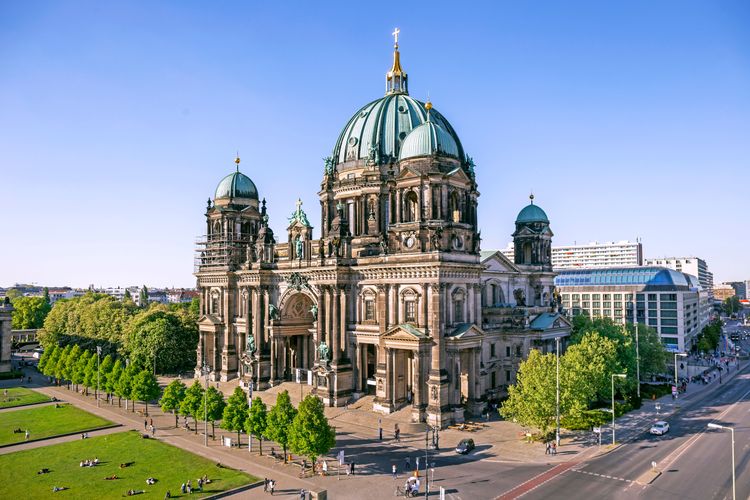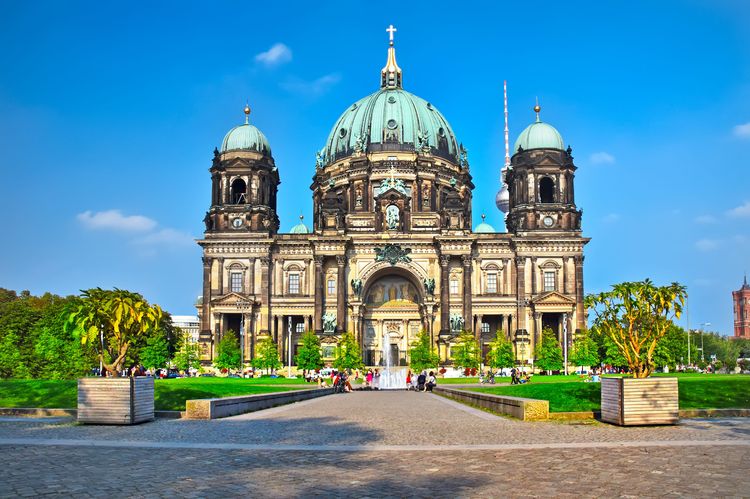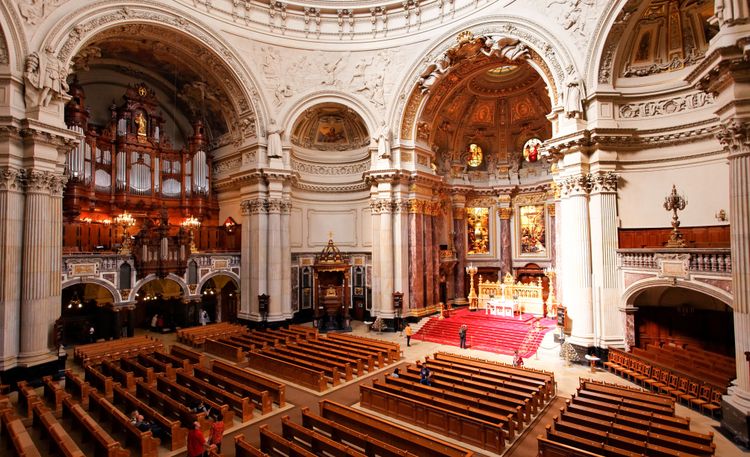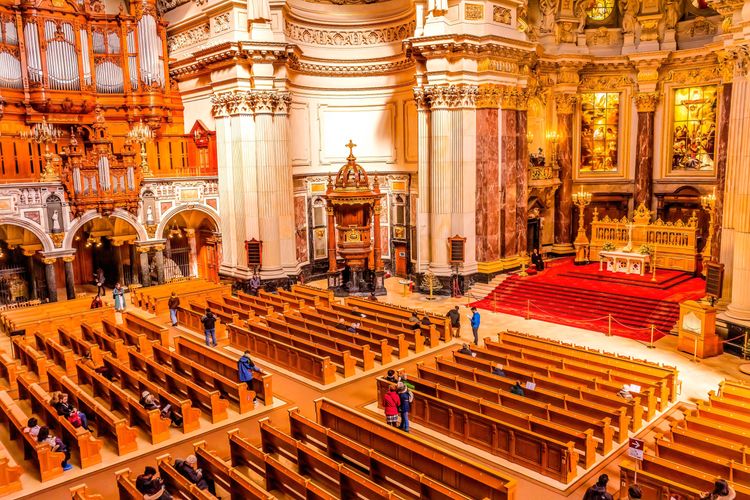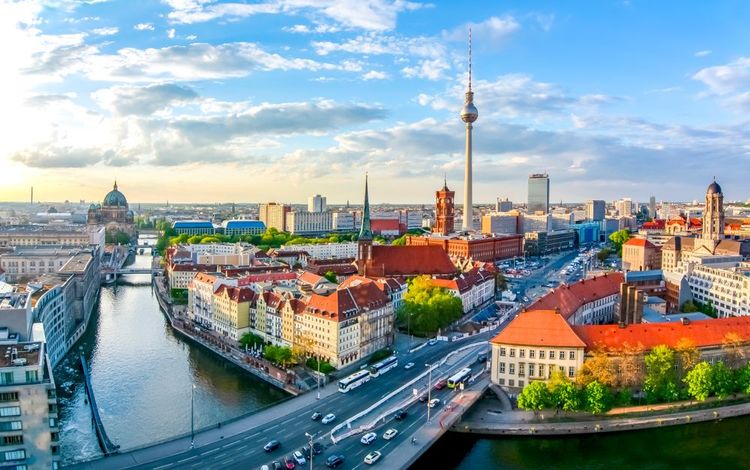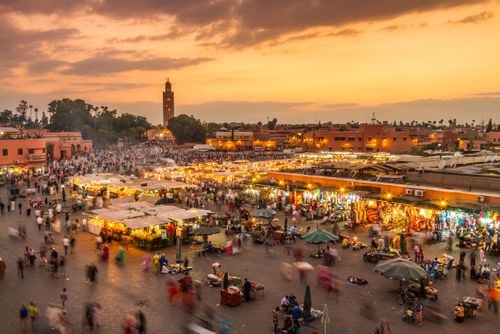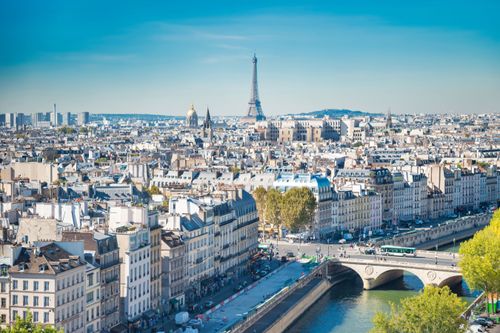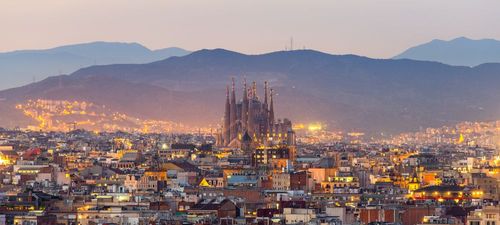The origins of Berlin’s Cathedral date back to the fifteenth century, when its earlier structures were initially incorporated into the Berlin City Palace. In the early 19th century, Karl Friedrich Schinkel, an eminent Prussian architect, set about transforming the court church into a neoclassical edifice. However, around fifty years later, preferences changed. When Wilhelm II came to the throne as Emperor of Germany in 1888, several designs for a new church were proposed, but none were approved. Wilhelm II also regarded Schinkel's church as excessively modest and demanded a grand new church to reflect the power and status of the imperial monarchy. Architect Julius Carl Raschdorff was commissioned to design the new church, but it took three iterations before Wilhelm II was satisfied with the plans. Raschdorff designed an opulent, magnificently imposing structure that he envisaged as the Berlin equivalent of St Peter's Basilica in Rome and St Paul's Cathedral in London. The original building was dismantled in 1893 and the foundation stone for the new church was laid in 1894. Eleven years later, in 1905, the new church was inaugurated. Unfortunately, the church suffered extensive damage during the Second World War. After the division of Germany, the cathedral church ended up in East Berlin. Restoration efforts began in 1975, but it was not until 1993, four years after the fall of the Berlin Wall, that the full restoration was completed. In 2008, a new golden cross was installed to replace the cross on the dome, which was due for renovation. The old cross can now be found in one of the cathedral's cemeteries in Liesenstraße 6.
 Berlin
Berlin
